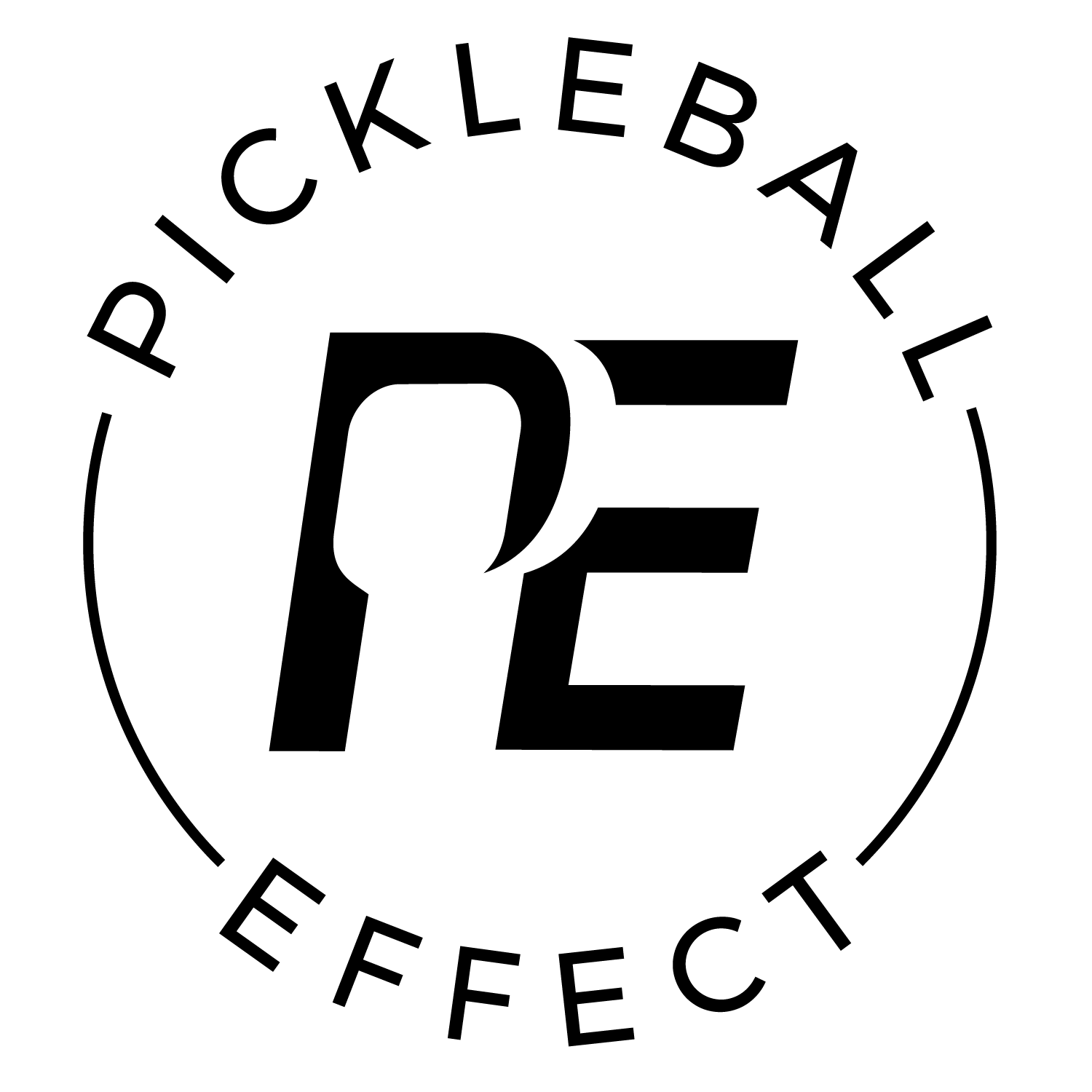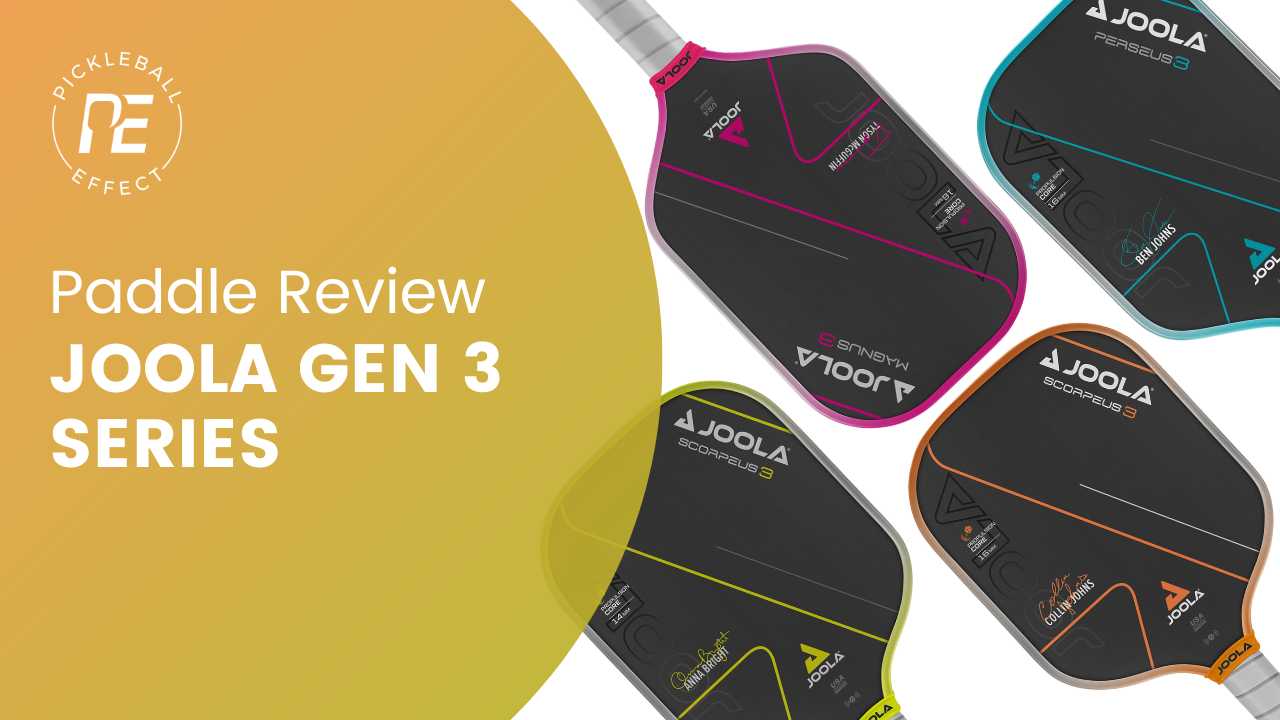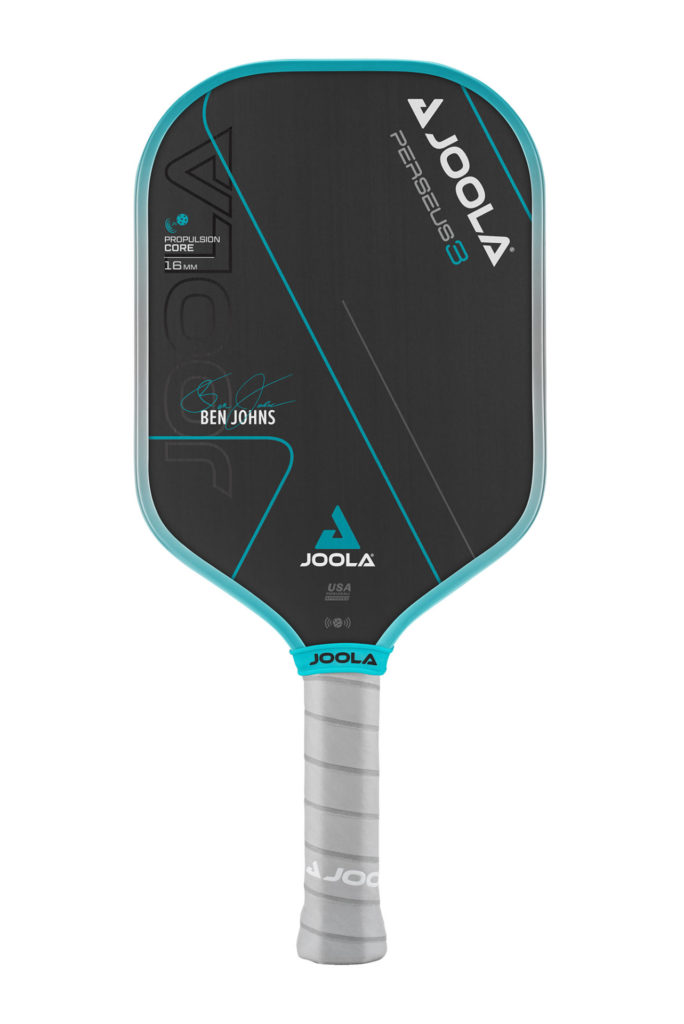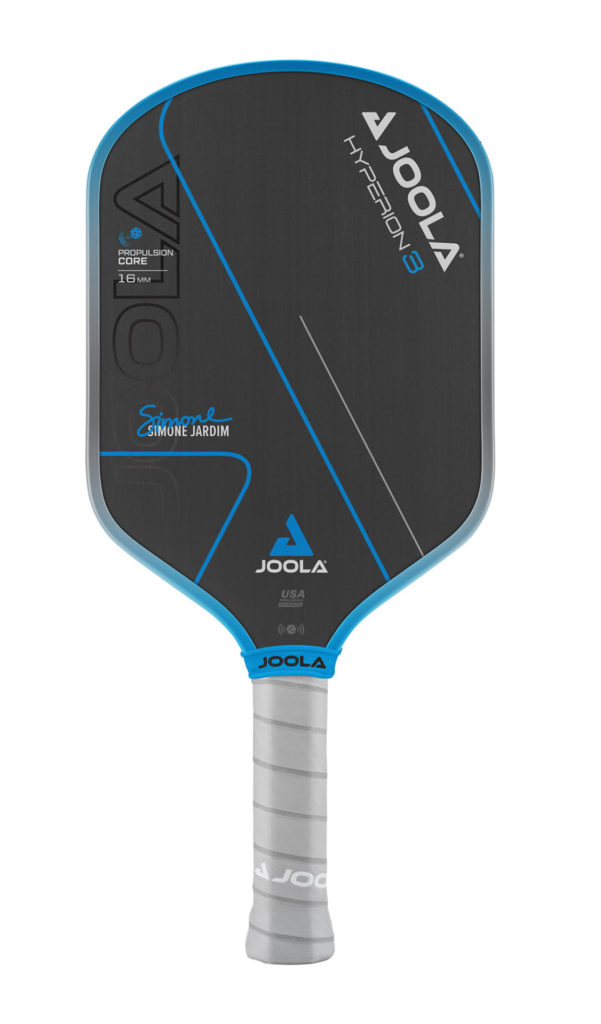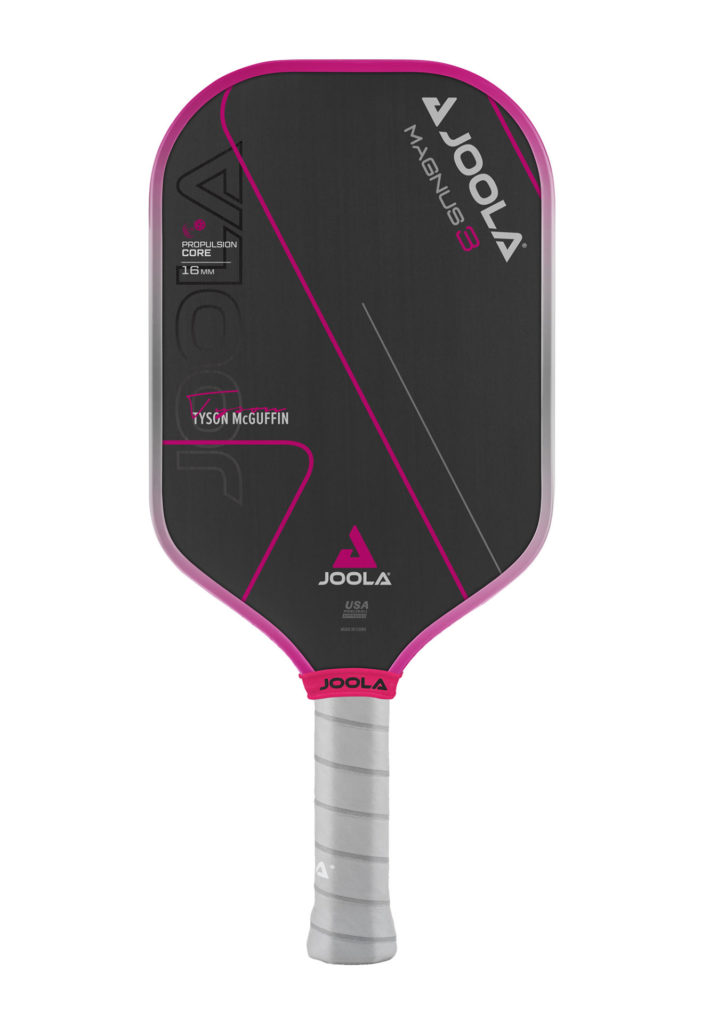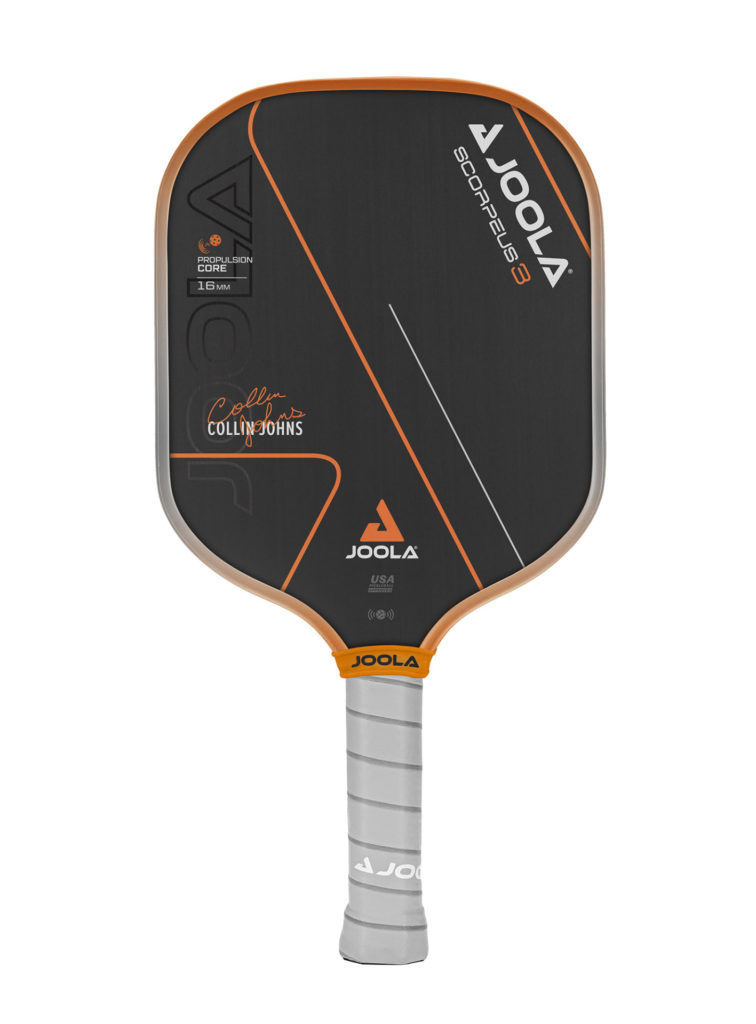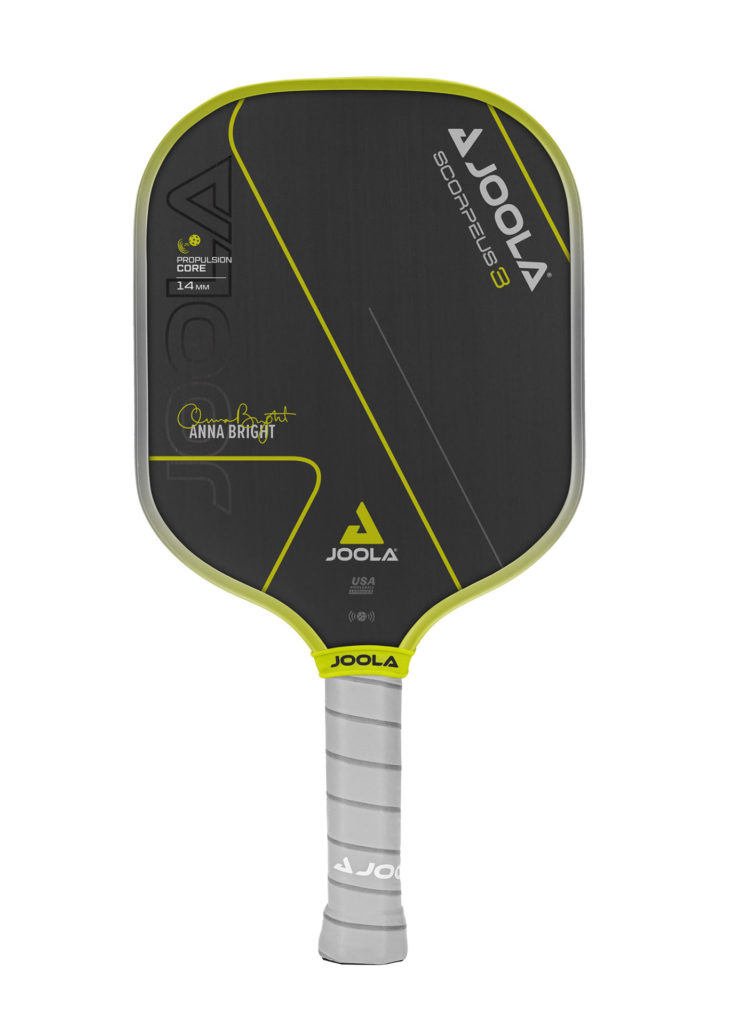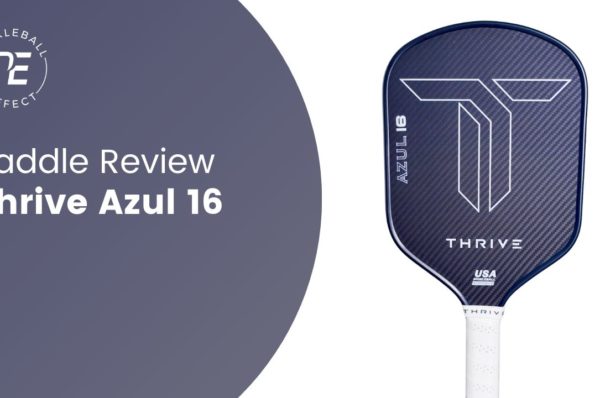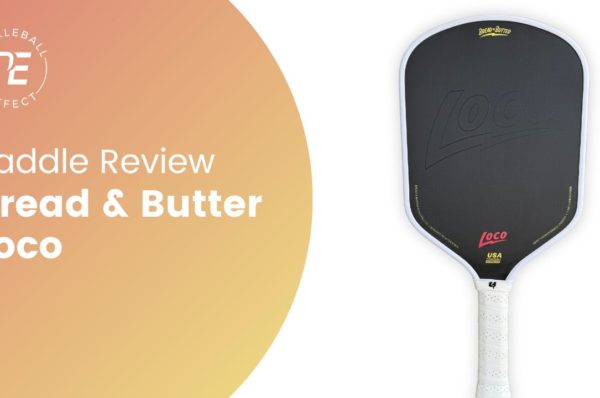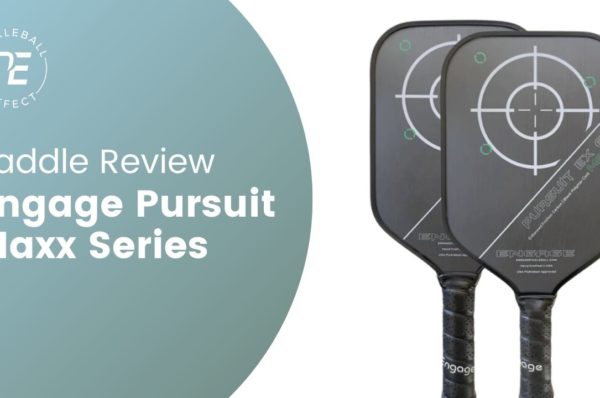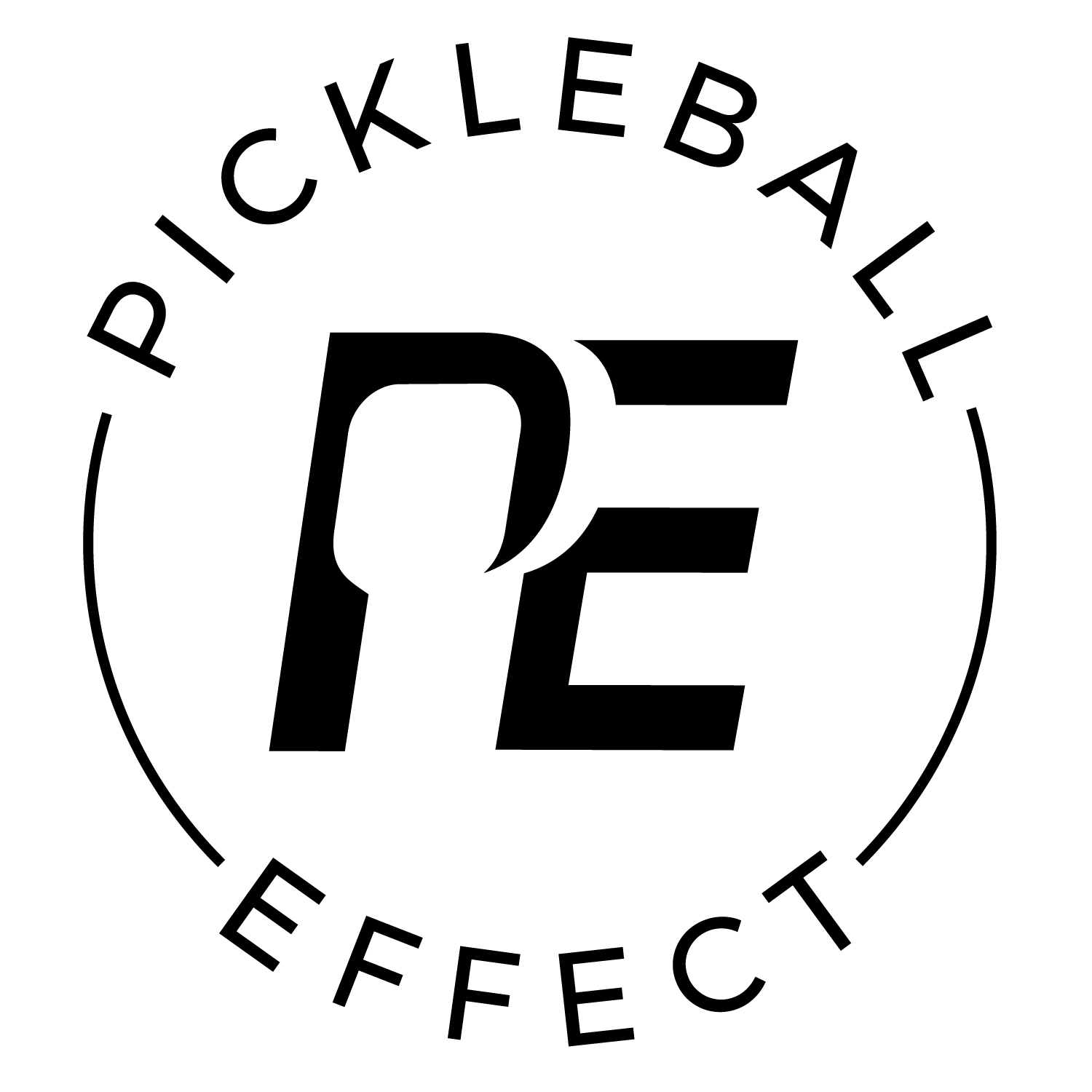The sport of pickleball is constantly evolving, and equipment plays a crucial role in this evolution. However, I’m willing to bet that few pieces of equipment will have a more profound impact than JOOLA’s Gen 3 paddles. These paddles truly stand out and JOOLA has the reach to get them in a lot of player’s hands, and whether this change is for the better or worse, they are poised to make the game faster, with more brands likely to follow suit.
If you’ve been following the paddle scene, then you’re familiar with the significant impact that Gearbox made with their Pro Power paddles, pushing the boundaries of what we believed was possible for power. Well, JOOLA’s Gen 3 paddles are in that same power tier and will likely create an even bigger splash with the extended reach that JOOLA has.
In recent years, new paddle technology has primarily been introduced by up-and-coming brands entering the market. However, this time it’s a major brand leading the charge. JOOLA’s new technology aims to add more power, and they have succeeded. The brand is launching several paddle shapes with this new technology, each offering a slightly different playing experience. Given the multitude of paddles in the series, it would be impractical to delve deeply into each specific paddle in this review. Therefore, I will structure this review differently from my other paddle reviews. First, I will discuss the technology they employ, then provide a performance overview of the series as a whole, and conclude with a brief performance description for each paddle option.
I had the privilege of being invited to JOOLA’s Gen 3 paddle series pre-release launch event last March. This allowed me to have these paddles in my bag for a few weeks, testing them extensively in preparation for this review ahead of the official release on April 16, 2024.
Table of Contents
JOOLA Gen 3 Paddle Technology
JOOLA changed up a few things with this series versus their previous paddles but there is one change they did to their core that sticks out and is the primary driver of the power they uncovered with this series.
They call it their Propulsion Core. The paddles essentially have an additional layer of foam around the edges of the paddle that extends towards the center of the paddle by about an inch or so before it connects with a traditional polymer core. Doing this adds flexibility to the perimeter of the paddle and gives the core a sort of trampoline effect which is where the power comes from.
While they added this new layer of edge foam, the paddle is still thermoformed and uses a raw carbon fiber facing material. I have definitions of thermoforming and other terms I use at the bottom of this review if you don’t know what those words mean.
Here’s a diagram that JOOLA produced showing the makeup of their paddles as well as a couple images I took showing the actual guts of the paddle (yes, I cut a $280 paddle in half just for those images!). The part in the diagram where it says “Foam For The Outer Channel” is the main new technology I’m talking about that creates that trampoline effect. Every paddle in this series is constructed the same way, but they have different shapes, handle lengths, and widths to pick from.

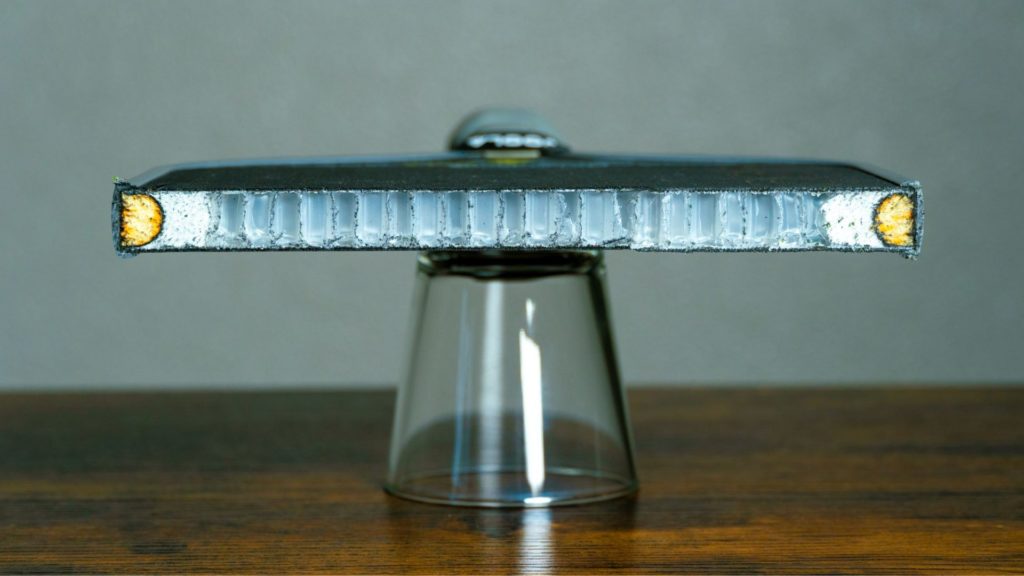
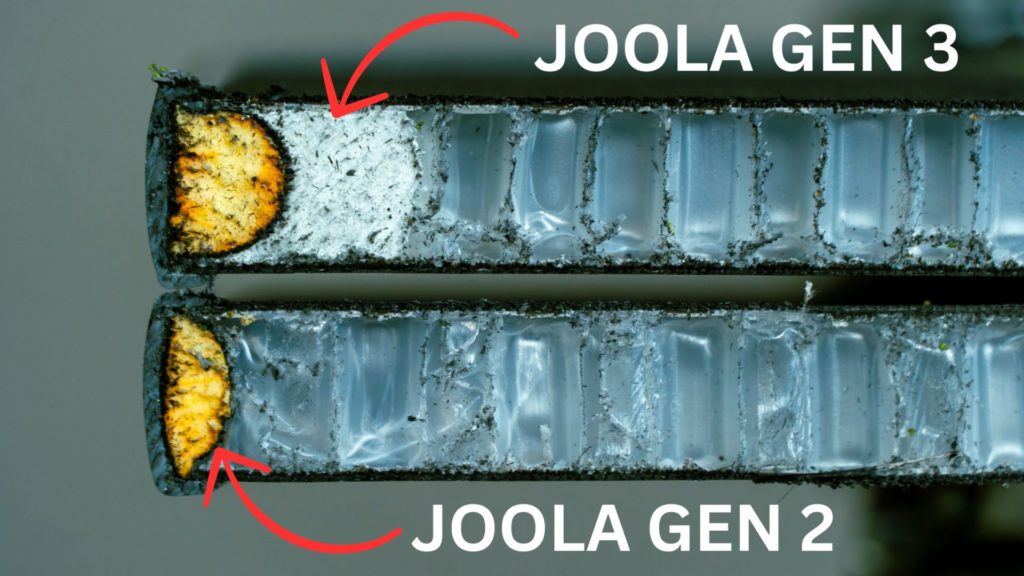
Paddle Series Identity and Performance Summary
General Performance
Every paddle in this series falls into the power category though there are varying levels of power between the different shapes and thicknesses offered. The power and pop on these is big. My tests for these metrics put all the paddles in the 90th percentile or more with the Ben Johns 16mm topping my charts for power.
When Gearbox came out last year with their Pro Power Elongated, it changed the game in terms of the amount of power we thought a paddle could produce. This series from JOOLA matches that level of power. What’s different from the JOOLA series versus the Gearbox series is that the JOOLA paddles are more forgiving & stable and JOOLA gives you more shape & thickness options to choose from. I love it when brands offer more options and it’s an advantage that bigger brands like JOOLA have over many smaller brands. They just have the capital and resources to offer multiple shapes and thicknesses so you can pick the right configuration to fit your needs.
The extra forgiveness that this series offers over the Gearbox Pro Power, particularly the 16mm options, is a big deal. With the Gearbox paddles you had to manage the extra power so that you didn’t pop up the ball or send it long but you would also make some mistakes due to the smaller sweet spot it has. With the JOOLA paddles you primarily just have to manage the extra power while the forgiveness level is less of an issue. However, the sweet spot isn’t perfect and I’ll speak to the nuances of that later in this section.
Power/Pop
Alright, I know I said these paddles have power, which I define as how much ball speed you can generate on full swings like drives and serves, but the access to power they provide is different from other power paddles. There doesn’t seem to be a cap. The technology they have seems to reward you with more power the more you put into your swing. If you’re a big hitter, then your power is going to be huge. If you can’t generate your own power, you’ll still get more power than other paddles but it may not be as huge as you’d expect. You might be thinking, “Well, obviously, Braydon, every paddle behaves like that.” But it’s different with these paddles. They exhibit exponential power growth rather than a linear trajectory. In other words, swinging twice as hard doesn’t result in twice as much power; it’s more like swinging twice as hard gives you three times the power. You’ll understand once you play with them. Additionally, I noticed that as you play more with them and the paddle breaks in, they seem to become even more powerful.
For pop, which is how much ball speed you can generate on shorter swings like punch volleys, is also very high. There are some paddles with lower pop but higher power levels, but that’s not the case here. You can hit the ball harder in every scenario from drives to punch volleys.
What’s all this power do for you? The extra power is going to create more opportunities for points off the drive, enable you to add more pressure on serves & returns, it’s going to end hand battles quicker for you and you’re going to be able to finish points more often when the ball is left up.
In addition to the offense these paddles provide, I also loved the power for defense against baseline drives—it made blocking shots with pace and depth much easier. These paddles greatly improved my ability to defend against drives, an area of weakness for me.
Access to more power isn’t going to be good for everyone, though, which I talk about more in the control section next.
***I do want to caution that I think there is a break in period for these paddles and the power level increases a bit after you’ve used them for a week or so. If you decide to pick one up, know that this is a thing. The power levels I gave all the paddles were after I had drilled and put a few hours on each one.
Feel/Control
These paddles have a different and unfamiliar impact feel compared to what else is out there so it’s more difficult to describe this aspect of them. I’d say they have a lively, harder, hollow type feel to them. It’s not a stiff or plush feel which are words I typically use to describe paddles. The 14mm versions accentuate those words I used more than the 16mm versions do. I preferred the feel at impact of the 16mms versions over the 14mm versions. The more I played with the 16s the more they started to feel normal but when you compare them side by side with other carbon fiber thermoformed or cold pressed paddles you can tell that the JOOLA’s have a firmer and more lively feel to them.
When I first started using these paddles, I had to get used to the increased power and pop they offered, as well as their unique feel when learning how to control them. Initially, they didn’t feel intuitive, so it took additional time to become accustomed to their feel and how the ball responded. However, as time went on, I did adapt and become comfortable with the new feel, and only then did I need to adjust to the extra power and pop. I must admit, though, that I still prefer the more traditional feel of original thermoformed or cold-pressed style paddles and the 14mm paddles never really felt any softer as time went on though the 16s started to feel softer as I adjusted to them.
When you’re playing with these paddles it’s like you’re playing with the wind behind your back the whole time. If you’ve played in those conditions then you know that you have to take a little off your serve and not swing as hard in moments that require more finesse to keep the ball in. Whenever the ball is above the net you can unleash the power and do what you want, but when the ball is below the net and you’re trying to find hard angles or your attacking a fourth ball or something then it’s more challenging simply because the ball jumps off the face and flys a bit more than nearly all other paddles out there and it takes some adjustments to dial in. For this reason, the paddles have a lower control rating and require more skill to hit a variety of finesse shots that you can do more easily with less powerful paddles.
When I first got the paddles I went and played games with them and it was a bit of a mess and I was spraying balls everywhere. Then I went and drilled with them a couple of times and it wasn’t until after I drilled with them and really got familiar with them that I started to control them better. By the end of my three weeks of play testing I felt confident working my way to the net and dinking felt good though I still would pop the ball up more in dink rallies and on resets than I typically would. I’m not going to pretend that these are easy to control but I did keep getting better and better with them each time I played. I got good enough with them by the end of my play test where I felt the benefits and gains I got from the extra power were starting to even out with the errors I was making as a result of the bigger power. Given more time I would keep getting better in this department.
I also shared these paddles with a lot of players and there were many who picked up the control side with these much quicker than I did. Everyone who picks up one of these paddles is going to have a little different experience with the soft game depending on what paddle you were using before and your preference for the feel at impact.
Sweet Spot/Forgiveness
The sweet spot experience was aligned with what you would typically expect for each paddle shape. Which is a good thing. These paddles are more forgiving than the Gearbox Power Pro paddles from side to side and have more life at the tip of the paddle than them which I think is a big bonus for these paddles vs the Gearbox Pro Power paddles. The vertical size of the sweet spot, however, is a bit different from your typical thermoformed paddle.
A typical thermoformed paddle offers a consistent response across its entire face, including the throat area. While the ball may not bounce as much near the throat of thermoformed paddles compared to the sweet spot, it is usually good enough or similar enough to the sweet spot to keep it in play in many scenarios. However, with the JOOLA Gen 3 paddles, the power drop-off from the sweet spot towards the throat is more significant. The ball doesn’t die when it hits the throat, but the trampoline effect that occurs in the center of the sweet spot is lessened. As a result, when you swing the paddle with a tighter stroke and hit the lower half of the paddle, expecting sweet spot power, you don’t get what you were expecting. I noticed this mostly when I was on defense or scrambling and not so much when I was dinking or in other less stressed situations. This observation shouldn’t scare you away from the paddle because it didn’t come into play a ton but it is something I noticed and thought it was worth mentioning.
16mm Vs 14mm Options
The difference in ball trajectory between the 16mm and 14mm paddles becomes more noticeable with greater power. Specifically, shots with the 16mm paddles result in a higher ball trajectory compared to the 14mm paddles. This means that shots like drives and drops with the 16mm paddles have more arc than the same strokes with the 14mm options. This variation is not inherently good or bad, but it’s important to be aware of it. Personally, I prefer the ball flight of the 14mm paddles because I like the lower trajectory combined with the additional power, which helps me keep my shots down and in play more consistently. However, the downside to the lower trajectory is that attacking from the below the net or consistently hitting returns and serves deep is more challenging.
The feel of the 14mm and 16mm paddles also differs significantly. As mentioned in the Control section above, the 14mm paddles have a much harder feel compared to the 16mm ones. Both myself and everyone else who tested the paddles preferred the feel of the 16mm paddles.
Furthermore, the 16mm paddles exhibit more power than their 14mm counterparts when hitting from the baseline, while their pop levels are fairly similar.
Lastly, there is a notable difference in the size of the sweet spots between the 16mm and 14mm paddles. The 16mm paddles offer forgiving play, although nothing particularly remarkable, while the 14mm paddles have tighter sweet spots. The Magnus 3 14mm and the Perseus 3 14mm are more challenging to manage, while the 14mm of the Scorpeus 3 is still quite forgiving due to its shorter and wider design. While the sweet spots are tighter on the elongated shapes, they are still on par and maybe slightly better than the average sweet spot of the many 14mm elongated paddles on the market.
Spin
I will update this section later once I’ve run the spin tests on the production models of the paddles I just received yesterday. I’ve been play testing with pre production models and want to verify the spin with the production models. However, the pre production models had great spin and was much better than their Gen 2 models.
Maneuverability
When it comes to the weight and swingweights of the paddles, there were no surprises there. They are what you would expect for each shape and thickness. The elongated paddles have higher swingweights and lower twistweights on par with similar shapes from other brands while the standard shaped paddles have lower swingweights and higher twistweights on par with similar shapes from other brands as well. I dive more into this subject in the individual overviews of each paddle below.
The Big Question
Here’s the ultimate question for these paddles. Do the gains you get from the extra power outweigh any additional errors you may make as a result of the extra power. The extra power is going to create more opportunities for points off the drive, enable you to add more pressure on serves & returns, it’s going to end hand battles quicker for you and you’re going to be able to finish points more often when the ball is left up. But the extra power also makes it tricker to attack low balls, can cause more pop ups when dinking & playing defense, and can make you less consistent on third shot drops. If you are generating more points with the power than you’re giving up in additional errors then the paddle is a win and you should use it. Otherwise, the paddle is just going to hurt you more than help you. The big power is fun and attractive but you have to be honest with yourself whether or not it benefits you more than it hurts you.
However, these are also just really fun paddles to play with just because they are powerful and unique, so if you’re just looking for the latest and greatest in tech and want to try something new. Then you’re going to want one.
Other Thoughts
These paddles are noticeably louder than most other paddles, particularly the 14mm versions. I wanted to include this but it didn’t really fit anywhere in the above sections.
Also, JOOLA is introducing a cool new way to register and authenticate your paddle with an NFC-enabled chip in the handle. You simply scan the handle using their JOOLA Connect app and then any potential warranty claims are easier to manage and it helps reduce counterfeit paddles from being produced.
Performance Reviews by Paddle
While the above section was meant to give you the general idea of the JOOLA Gen 3 series as a whole, this section will give you a more detailed look into the nuances and numbers of each paddle in the series that I’ve played.
What are the available options?
This series offers four different shapes, with each shape available in both 16mm and 14mm widths. There are three elongated shape options: the Perseus (Ben Johns’ preferred shape) with a longer handle length, the Magnus (Tyson McGuffin’s preferred shape) with a shorter handle, and the Hyperion (Simone Jardim’s preferred shape) featuring a longer handle and a curved top. Additionally, there is a standard shaped option called the Scorpeus that is shorter and wider, paired with a longer handle, the shape preferred by Collin Johns and Anna Bright.
I extensively play tested all the models I speak to below and con confidently provide feedback on them.
JOOLA Ben Johns Perseus 3 16mm Review
- Shape: 16.5″ x 7.5″ (elongated)
- Static Weight: 8 oz avg
- Swingweight: 119-123 (high)
- Twistweight: 6.2 (moderate)
- Spin RPMs: 1994 (high)
- Face: Raw Carbon Fiber
- Grip Circumference: 4.25″
- Handle Length: 5.5″
- Core: 16mm Polypropylene Honeycomb
- Price: $280 (no discounts available for now)
- Warranty: Six months (click here for more info)
This is the model that the number one male player in the world, Ben Johns, plays with and it tested the highest for power among the group. You won’t find anything else out there more powerful than this one. Drives, serves, returns, overheads, you name it, all have added speed and pressure on your opponents. It can create some issues for them. Conversely, it’s also easier to send balls long. You have to be focused on each hit because if you relax and get too casual then it’s easier for the ball to get away from you.
The swingweight is on the higher end. My paddle measured 121 and anything over 120 is when a paddle starts to feel head heavy. I imagine the swingweight range for this paddle is about 119-123 depending on the weight of the paddle they send you. It’s not an outrageous number, but worth noting. If you like the elongated shape but wish it had a lighter swingweight then look at the Magnus 3 16mm. It has a shorter handle than the Perseus 3 which brings the balance point and swingweight down to make it more maneuverable.
The twistweight measurement is 6.2 which is about average for an elongated shape and an improvement over their previous models. The Gen 2 Perseus was known for being less forgiving but this one is better though it’s also heavier, so there is some give and take there.
Who would like the Perseus 3 16mm? If you have an aggressive, attacking style of play then you won’t find a better paddle than this one. Because of its higher power rating and slightly heavier design I would recommend this one for higher level skilled players. The power and weight could cause more errors than winners if you don’t have a well developed game. However, if you like the idea of this paddle but want something a little more conservative then check out the Scorpeus models.
JOOLA Ben Johns Perseus 3 14mm Review
- Shape: 16.5″ x 7.5″ (elongated)
- Static Weight: 7.8 oz avg
- Swingweight: 115-118 (moderate)
- Twistweight: 5.91 (moderately low)
- Spin RPMs: 1930 (high)
- Face: Raw Carbon Fiber
- Grip Circumference: 4.125″
- Handle Length: 5.5″
- Core: 14mm Polypropylene Honeycomb
- Price: $280 (no discounts available for now)
- Warranty: Six months (click here for more info)
The 14mm version of Persues has many similar characteristics of the 16mm but with a couple of differences. It gives you a little less power, a touch more pop, and is more maneuverable than the 16mm but comes at the cost of a firmer feel and smaller sweet spot.
I actually liked that the 14mm wasn’t as powerful and felt less jumpy at impact compared to the 16mm. I was able to control the ball better when dinking better than what I could with the 16mm. The reason it has a lower control/feel rating than the 16mm is because it has a firmer feel and is less forgiving which combined to cause more challenges than the 16mm did overall in that area. This version is lighter, more maneuverable and gives you more ball speed on counters when you find the center of the paddle. I would imagine more people would prefer the playability and feel of the 16mm though there is a place for the 14mm, just more niche.
I mentioned in my series overview above that the 14mm versions have a lower ball flight trajectory than the 16mm versions. I liked this in certain scenarios. I was able to keep my drives lower more effectively. This feature about them will be appealing to some.
Who would like the Perseus 3 14mm? While I think the smaller sweet spot and firmer feel of an already very powerful paddle makes this paddle more niche, it will still be appealing for those looking for power and more maneuverability and like the lower ball flight the thinner core offers.
JOOLA Simone Jardim Hyperion 3 Review
- Shape: 16.5″ x 7.5″ (elongated with rounded top)
- Static Weight: 8 oz avg
- Swingweight: 115-118 (high)
- Twistweight: 5.9 (low)
- Spin RPMs: 2000 (very high)
- Face: Raw Carbon Fiber
- Grip Circumference: 4.25″
- Handle Length: 5.5″
- Core: 16mm Polypropylene Honeycomb
- Price: $280 (no discounts available for now)
- Warranty: Six months (click here for more info)
Simone Jardim is a legend in the pro pickleball scene. She prefers a lighter, elongated paddle and uses two handed shots and that’s what her paddle shape offers more of compared to the others. It has the same total length and handle length as the Perseus model except it’s lighter and more maneuverable.
The lighter nature of the paddle does come at a little sacrifice of power and stability but it’s nothing huge. I also like that because it’s lighter you can now add some weight to boost the paddle’s stability past that of the Perseus 3 model and still keep the swingweight in a manageable place and less than the Perseus 3 if you do it right.
Who would like the Hyperion 3 16mm? If you want an elongated shape and longer handle but are worried about the Perseus being too head heavy then this is the paddle you want.
JOOLA Tyson McGuffin Magnus 3 16mm Review
- Shape: 16.5″ x 7.5″ (elongated)
- Static Weight: 8 oz avg
- Swingweight: 117-120 (moderately high)
- Twistweight: 6.25 (moderate)
- Spin RPMs: 1940 (high)
- Face: Raw Carbon Fiber
- Grip Circumference: 4.25″
- Handle Length: 5″
- Core: 16mm Polypropylene Honeycomb
- Price: $280 (no discounts available for now)
- Warranty: Six months (click here for more info)
The only difference in the design of the Magnus 3 vs the Perseus 3 model is the handle length. It has a shorter handle length of 5” vs the 5.5” of the Persues. This surprisingly changes up the paddle’s metrics and how the paddle plays a meaningful amount. Having the shorter handle brings the balance point and swingweight down a handful of points, which is noticeable when you play with it. It feels lighter and more maneuverable than the Perseus 3 model. It also has a touch less power and pop which makes it a little easier to control.
Everything else I said about the Perseus 3 16mm model also applies here. Picking between the Magnus 3 16mm and the Perseus 3 16mm primarily comes down to handle length preference. If you don’t play any two handed shots then I’d recommend the Magnus 3 because you get similar playing characteristics as the Perseus 3 but with a lighter swingweight for a faster reaction time. However, if you do play any two handed shots, like I do, then you’ll want the Perseus 3 model. The 5” handle on this isn’t ideal and not as comfortable for two handed shots.
Who would like the Magnus 3 16mm? If you have an aggressive, attacking style of play then you’re going to love this paddle. It has a lighter swingweight and is more manageable than the Perseus 3 16mm but the shorter handle isn’t for everyone and isn’t comfortable for two handed shots if that’s part of your game.
JOOLA Tyson McGuffin Magnus 3 14mm Review
- Shape: 16.5″ x 7.5″ (elongated)
- Static Weight: 7.9 oz avg
- Swingweight: 113-116 (moderate)
- Twistweight: 6.19 (moderate)
- Spin RPMs: 2049 (very high)
- Face: Raw Carbon Fiber
- Grip Circumference: 4.18″
- Handle Length: 5″
- Core: 14mm Polypropylene Honeycomb
- Price: $280 (no discounts available for now)
- Warranty: Six months (click here for more info)
This is the model that one of the most popular male players, Tyson McGuffin, plays and helped design. Tyson was previously sponsored by Selkirk and has been using a shorter handle and thinner core like this for a long time, so it was no surprise to see that his paddle is designed like this. Tyson plays with a one handed backhand so he doesn’t feel the need for a longer handle. Like I mentioned in my description of the Perseus 3 14mm, the benefits of the 14mm option over the 16mm are its lighter swingweight, more pop on counters, and its lower ball trajectory. But the drawbacks are its firmer, harsher feel, and tighter sweet spot. While the sweet spot is a little better than the Perseus 3 14mm it’s still more demanding than the 16mm models. However, as far as 14mm paddles go, the sweet spot for this is on par with other elongated 14mm paddles out there so if you know you like 14mm paddles then don’t be scared to pick this one up because you’re unsure about the sweet spot size.
Tyson is known for big serves, big drives, and his control & patience at the net. This paddle has made him more of a threat up at the net on counters and attacking than he’s ever been and you’ll see him speeding up and attacking more often with this paddle than he has in the past.
Like the Perseus 3 14mm I think the harsher feel and tighter sweet spot makes this paddle more niche though there is still a place for it.
Who would like the Magnus 3 14mm? While I think the tighter sweet spot and firmer feel of an already very powerful paddle makes this paddle more niche, it will still be appealing for those looking for power and more maneuverability and like the lower ball flight the thinner core offers. Picking between the Magnus 3 14mm and the Perseus 3 14mm primarily comes down to handle length preference.
JOOLA Collin Johns Scorpeus 3 16mm Review
- Shape: 16″ x 8″ (standard)
- Static Weight: 8 oz avg
- Swingweight: 110-113 (low)
- Twistweight: 6.88 (high)
- Spin RPMs: 1993 (high)
- Face: Raw Carbon Fiber
- Grip Circumference: 4.25″
- Handle Length: 5.25″
- Core: 16mm Polypropylene Honeycomb
- Price: $280 (no discounts available for now)
- Warranty: Six months (click here for more info)
Collin Johns, one of the best right siders in the world, plays with this model. Although the Magnus 3 and Perseus 3 models offer immense power and have their merits, I believe the Scorpeus models truly shine in this series. The power is still substantial, but it is slightly toned down due to the paddle’s shorter and wider shape which makes it easier to control while still having access to the bigger power. Additionally, the Scorpeus plays very forgivingly and is highly maneuverable, making it more appealing and accessible to a broader range of players.
The Scorpeus 3 16mm and the 14mm models are the first true power paddles with a standard shape. The nature of shorter and wider paddles gives them less power so the fact that these have the forgiving nature of a standard paddle but the power and pop level of a true power paddle is significant. A lot of people are going to like these I think.
I also appreciate that they have paired the standard shape with a slightly longer handle, measuring 5.25 inches. This provides enough room for comfortable execution of two-handed shots. We are now seeing a trend where more brands are combining standard-shaped paddles with longer handles. Historically, however, standard-shaped paddles were typically paired with shorter handles by most brands.
The only thing you give up with the Scorpeus 3 shape vs the elongated shapes of the Perseus 3 and the Magnus 3 is the reach. You can’t lean into the kitchen as far and you can’t cover as much court. However, I think the benefits you gain in the more manageable power, lighter swingweight, and increased forgiveness are going to be worth the loss in reach and drop in power you get in comparison to the elongated models.
If you have never used a standard-shaped paddle before, it may take some time to adjust to the new length, and not everyone can make that adjustment. However, if you are able to adapt, I believe it’s worth it for this series.
Who would like the Scorpeus 3 16mm? If you’re nervous about being able to handle the big power in this series then the Scorpeus 3 shape is for you. You still have access to good power but it’s toned down and easier to control. Plus you get more maneuverability and an increase in the size of the sweet spot.
JOOLA Anna Bright Scorpeus 3 14mm Review
- Shape: 16″ x 8″ (standard)
- Static Weight: 7.8 oz avg
- Swingweight: 109-112 (low)
- Twistweight: 6.61 (high)
- Spin RPMs: 1965 (high)
- Face: Raw Carbon Fiber
- Grip Circumference: 4.125″
- Handle Length: 5.25″
- Core: 14mm Polypropylene Honeycomb
- Price: $280 (no discounts available for now)
- Warranty: Six months (click here for more info)
Anna Bright, one of the top female players in the game, plays with this model. While the other elongated 14mm models have tighter sweet spots, that’s not the case with this one. Its standard shape gives it a big enough sweet spot where it’s a non issue and doesn’t hold you back but then you also get the benefits of the 14mm design which is faster hand speed, more pop on counters, and a lower ball trajectory. Standard shaped paddles will often have a little softer feel to them compared to their elongated counterparts but that wasn’t really the case here, it still had the same, harsher feeling that the other 14mm paddles had which is a drawback for the 14mm options in this series.
The Scorpeus 2 14mm offers similar power as the 16mm model but with more pop at the net that is comparable to the elongated models in this series. Although the power level is similar with the 14mm and 16mm models, the 14mm doesn’t feel as bouncy off the face and I was a little more consistent with my thirds and resets as a result over the 16mm. However, when I shared this paddle with others the majority preferred the 16mm option and thought they could control it better, so maybe it’s more of a matter of preference than anything else. If you’ve always used 16mm paddles then I don’t see a reason for you to switch to a 14mm paddle now when the 16mm option still gives you plenty of power and pop. However, if you’re accustomed to 14mm paddles you might actually like the 16mm option in this series because the power and pop is there that you don’t normally get from a 16mm standard and it has a more comfortable feel to it compared to the 14mm option. The only reasons I can see why someone would select the 14mm over the 16mm is because they like the feedback of harsher feeling paddles, want a high power, low swingweight paddle, or just like the lower ball trajectory of 14mm options.
Who would like the Scorpeus 3 14mm? This paddle is light, fast, forgiving, and packs a big punch. If those are characteristics you’re looking for then this is a good match. If you’re nervous about the harsher feel of the 14mm then I’d go with the 16mm model, but there will be players who prefer and love this model.
Are These Worth $280?
The only time I feel like any brand can ask for this much money is when they are providing a paddle you can’t find anywhere else. And right now, you can’t find this paddle anywhere else.
My guess is that we will likely see more paddles come out this year with comparable power and performance metrics so if the price of these is too much and you’re willing to wait six months then I’m sure we’ll see more options come to the market. But as of the time of this writing and when these paddles were launched, they are leading the way.
Final Thoughts
No doubt these are unique paddles and offer a different playing experience than anything else out there to date. While this makes them exciting and fun, it doesn’t mean they are for everyone. If you can’t manage the extra power these bring to the table then you’re likely going to find more errors than winners with these. But if you can manage the power then there are a lot of benefits these bring.
These are also just really fun paddles to play with just because they are powerful and unique, so if you’re just looking for the latest and greatest in tech and want to try something new. Then you’re going to want one.
For the past year or so, paddle technology has primarily focused on adding more power. Although advancements have been made, no one has perfected it yet. I believe this technology is a step in the right direction and is, without a doubt, one of the best power type paddles I have played to date. However, I do not believe that this is the end of the road for power technology advancements. In other words, we have not reached the end of the road yet, but we are getting closer.
Get 10% OFF Most of JOOLA's Paddles & Gear
If you think JOOLA has the right gear for you, get 10% off most paddles and gear on their website with code 10EFFECT.
The code will not work for initial launch of the Gen 3 JOOLA paddles but will work for other paddles & gear.
Shop JOOLAGlossary
I’ve categorized paddles into three categories. Control, All-Court, and Power. Paddle categories are determined by Braydon after he hits or reviews the paddle.
- Control paddles offer a softer feel and better absorbs pace off the ball but doesn’t give you as much power.
- All-Court paddles give you a blend of power and control and does well at everything though it doesn’t excel at anything.
- Power paddles often have a firmer feel and will return more power but are harder to control.
A paddle’s weight represents the inherent mass of the paddle as measured on a scale. However, relying solely on this static weight measurement can be misleading when assessing the true perceived heaviness of the paddle. Even if two paddles both clock in at 8 oz, their actual heft in your hand can markedly differ due to variations in weight distribution within the paddle. This is why the static weight should be considered with the swingweight of the paddle.
Most paddles will come in around 8 ounces which is what I consider midweight.
There are three primary shapes a paddle can have which consists of the length and width of the paddle. These three shapes are:
- Elongated: The dimensions for an elongated paddle are 16.5″ x 7.5″.
- Standard: A standard shaped paddle has dimensions of 16″ x 8″.
- Hybrid: A hybrid shaped paddle falls somewhere in between the standard and elongated shapes, with approximate dimensions of 16.25″ x 7.5″-7.7″.
Then there are two less common shapes you’ll see. These are:
- Extra-Elongated: This shape is 17″ x 7″
- Widebody: This any paddle shorter than 16″ long.
When considering the advantages and trade-offs of paddle shapes, it’s important to understand the characteristics of each shape.
- Elongated Paddle: An elongated paddle offers increased reach, spin, and power. However, this additional reach comes at the expense of forgiveness, particularly from side-to-side.
- Standard Paddle: In contrast, a standard-shaped paddle provides less reach and a little less power & spin but offers greater overall forgiveness. This means that while you may not have the same extended reach as an elongated paddle, you gain better control and stability.
- Hybrid Paddle: The hybrid shape serves as a middle ground between the elongated and standard shapes. It provides a balance between reach and forgiveness, offering players a versatile option that combines aspects of both shapes.
It’s interesting to note that advanced players often prefer elongated shapes. On the other hand, players at lower skill levels typically opt for the extra forgiveness offered by standard shaped paddles.
Ultimately, the choice of paddle shape depends on an individual’s playing style, preferences, and skill level. Whether your focus is on reach or forgiveness, understanding the unique benefits and trade-offs of each shape can assist you in selecting the paddle that best suits your game.
Swingweight is a measure of the paddle’s resistance to swinging about the end of the handle. The higher the swingweight number the heavier it will feel in your hands. A higher swingweight has more power but is harder to swing, lower swingweight is easier to swing but has less power. Sometimes a faster swing with a lower swingweight can make up for power lost in swingweight. The price paid for that is greater impact shock. Stock swingweights will vary between 100 – 130. Anything over 120 would be considered head heavy, while 114-119 is midweight, and anything below 114 would be considered a lighter paddle.
Twistweight is the resistance to rotating around the long axis through the middle of the paddle from butt to tip. The higher the twistweight the more resistance the paddle has to rotating on off center hits. This measurement is closely related to the amount of forgiveness or the size of the sweet spot of the paddle. A higher twistweight indicates a bigger sweet spot. Twistweight numbers range from 5 – 8 with 6.3 being about average.
Balance point is the distance of the paddles center of gravity from the butt of the handle. The bigger the number the further the balance point is from the butt of the handle. Paddles with higher balance points will carry through the ball better but aren’t as easy to maneuver because the weight of the paddle is further way from your hand. Paddles with smaller balance points are easier to maneuver and often easier to control.
Measuring the revolutions per minute (RPMs) off of a serve you get a number that shows the spin potential of a paddle. Using these RPM measurements I’ve created five buckets that a paddle will fall into indicating its overall spin potential. The five buckets are:
1900 or Higher = Very High
1700 – 1900 = High
1500 – 1700 = Medium
1300 – 1500 = Low
1300 or less = Very Low
You can tell a big difference in the amount of spin a paddle generates when you compare a Very High paddle to a low paddle. But the gains from Medium to High to Very High are marginal. We’ve found that having at least a medium rating is often enough if you’re looking for a good spin paddle. However, if you’re a big hitter then you will benefit more from a high spin paddle to help you keep the ball in play more often.
Power is defined as how much ball speed you can generate when you take a full swing on the ball. So shots like serves, drives and overheads. The higher the power the more ball speed you can generate with the paddle in those scenarios.
Pop describes how hard you can hit the ball on shorter swings and gives you an idea of how quickly a ball comes off the face when you apply less force on the ball. So shots volleys, dinks, counters, and resets are all affected by how poppy a paddle is. The higher the pop of a paddle the stronger your counters will be but it takes more skill to keep the ball from floating or popping up on you when resetting a hard hit ball or when dinking.
Braydon competes at the 5.0 level and plays in 5-10 tournaments a year. He plays/drills 3 to 4 times a week and would play more if time allowed it.

